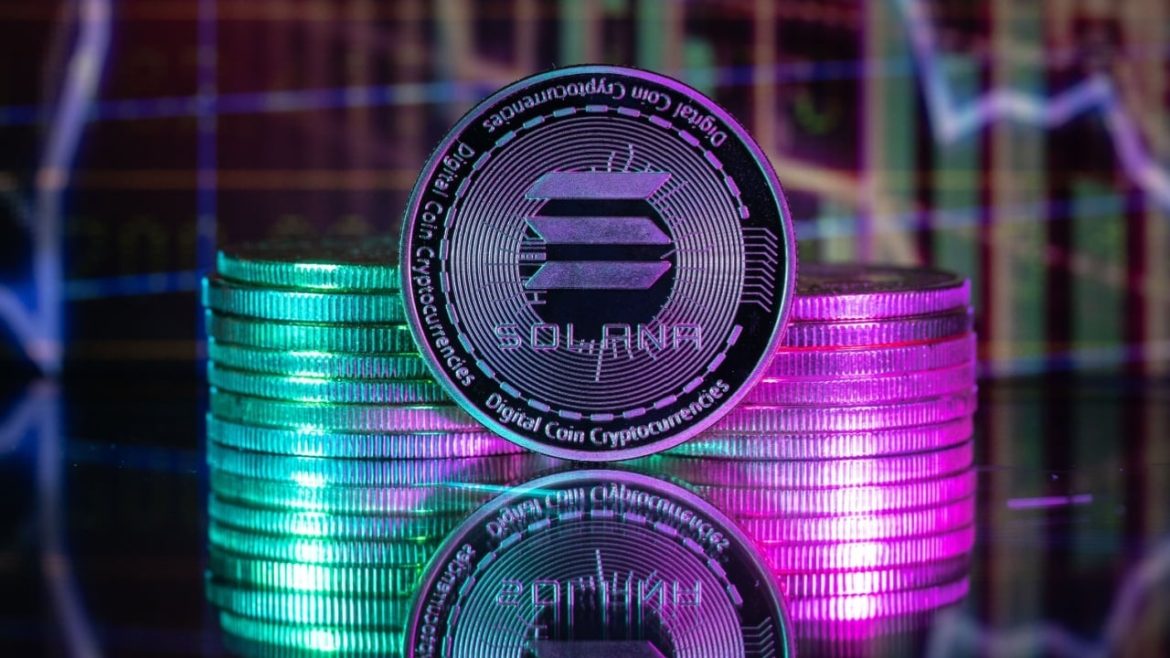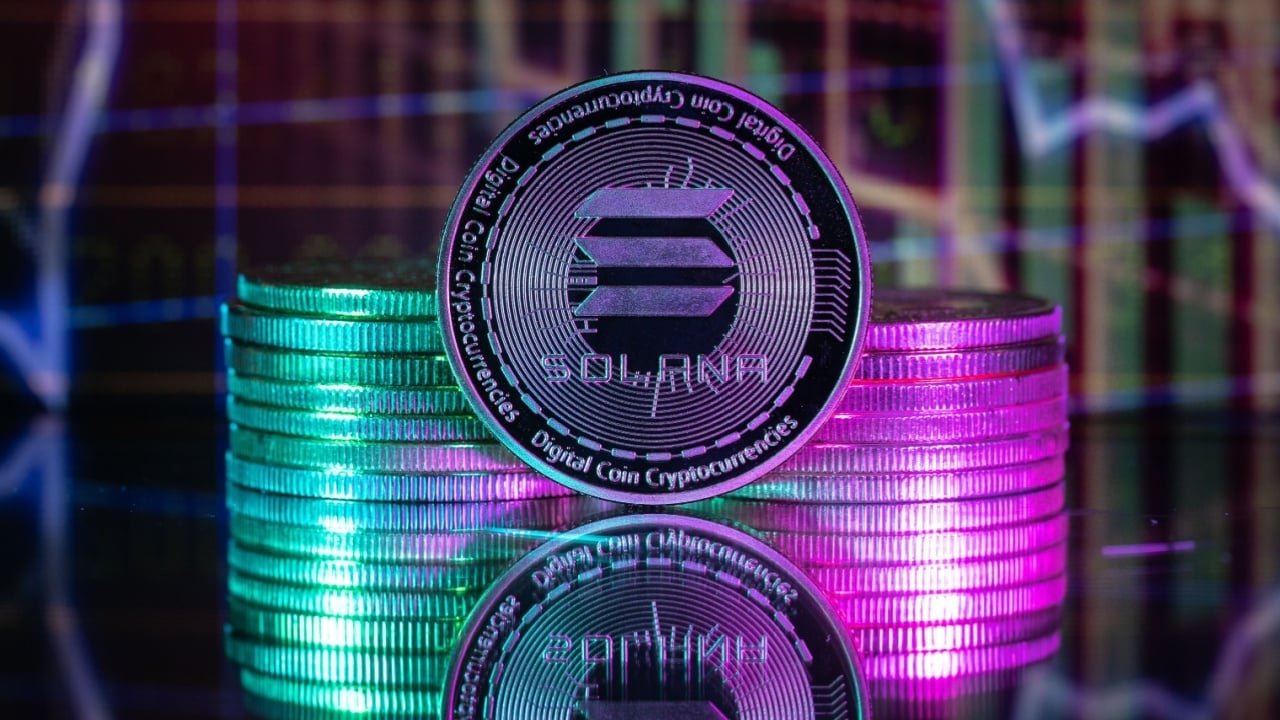Mercurity Fintech’s $200 Million Solana Venture: A Strategic Pivot in the Blockchain Arena
Introduction: A Bold Move in the Crypto Space
Mercurity Fintech Holding Inc. (NASDAQ: MFH) has made a significant stride in the blockchain-powered financial services sector by securing a $200 million equity line of credit from Solana Ventures. This strategic move is not merely an investment but a calculated pivot that could redefine Mercurity’s financial landscape and bolster Solana’s standing in the competitive blockchain ecosystem. The deal underscores a growing trend of institutional adoption of digital assets, signaling a shift towards a more integrated and diversified approach to corporate treasury management.
The $200 Million Deal: Unpacking the Details
The agreement between Mercurity Fintech and Solana Ventures is a flexible equity line of credit, providing Mercurity with access to capital to be deployed within the Solana ecosystem. This is not a one-off investment but a strategic resource that Mercurity can draw upon to execute its Solana-based treasury strategy. The strategy encompasses several key areas:
Building a Substantial SOL Treasury
Mercurity’s primary goal is to accumulate a significant position in Solana’s native token, SOL. This indicates a long-term bullish outlook on the Solana blockchain and its potential for growth. By building a substantial SOL treasury, Mercurity aims to capitalize on the token’s appreciation and the broader ecosystem’s expansion.
Generating Yield Through Staking and DeFi
Mercurity plans to actively participate in the Solana network by staking their SOL holdings and exploring opportunities within the decentralized finance (DeFi) sector. Staking involves locking up SOL tokens to support the network’s security and earn rewards. DeFi participation, on the other hand, involves leveraging the Solana blockchain to access financial services such as lending, borrowing, and trading without intermediaries. These activities aim to generate passive income and maximize returns on investment.
Running Validator Nodes
Becoming a validator on the Solana network involves operating a node that helps to secure and validate transactions on the blockchain. Validators play a crucial role in maintaining the network’s stability and security. By running validator nodes, Mercurity not only contributes to the network’s robustness but also earns additional rewards, further enhancing its revenue streams.
Investing in Tokenized Real-World Assets
Mercurity’s strategy also includes exploring the potential of bringing real-world assets onto the Solana blockchain through tokenization. Tokenization involves converting the rights to an asset into a digital token on a blockchain. This process can enhance liquidity, reduce transaction costs, and open up new investment opportunities. By investing in tokenized real-world assets, Mercurity aims to diversify its portfolio and tap into the growing market for digital assets.
Why Solana? The Strategic Rationale
Mercurity’s decision to focus on Solana is not arbitrary. Several factors likely contributed to this choice:
High Throughput and Low Fees
Solana is renowned for its high transaction throughput and relatively low fees compared to other blockchains like Ethereum. This makes it an attractive platform for building and scaling DeFi applications. High throughput ensures that transactions are processed quickly, while low fees make it cost-effective for users and developers.
Growing Ecosystem
Solana boasts a rapidly expanding ecosystem of DeFi projects, NFT marketplaces, and other innovative applications. This provides Mercurity with a diverse range of opportunities to explore and invest in. The growing ecosystem also indicates a vibrant and active community, which is crucial for the long-term success of any blockchain platform.
Institutional Adoption
Solana is increasingly gaining traction among institutional investors, further validating its potential as a leading blockchain platform. Institutional adoption is a significant indicator of a blockchain’s credibility and long-term viability. As more institutions invest in Solana, the network’s stability and security are enhanced, making it an attractive platform for Mercurity to engage with.
Wilfred Daye, Mercurity’s Chief Strategy Officer, emphasized that the Solana strategy is “additive” and doesn’t replace their existing plans to invest in Bitcoin. This suggests that Mercurity views Solana as a complementary asset, offering different risk-reward characteristics compared to Bitcoin. Daye also noted SOL’s high-yield and DeFi-friendliness as distinguishing factors from BTC.
Implications for Mercurity Fintech
This strategic investment carries significant implications for Mercurity Fintech:
Diversification of Assets
By venturing into the Solana ecosystem, Mercurity is diversifying its digital asset holdings beyond Bitcoin. Diversification is a key strategy in risk management, as it helps to reduce the overall portfolio risk. By holding a mix of assets, Mercurity can mitigate the impact of volatility in any single asset class.
Enhanced Revenue Streams
The planned activities, such as staking, DeFi participation, and running validator nodes, could generate new revenue streams for Mercurity. These activities not only provide passive income but also contribute to the network’s security and stability. By actively participating in the Solana ecosystem, Mercurity can enhance its revenue streams and achieve sustainable growth.
Positioning as a Leading Institutional Player
By actively building a Solana treasury and engaging with the ecosystem, Mercurity aims to establish itself as a leading institutional participant in the Solana space. This positioning can attract attention from other institutional investors and enhance Mercurity’s reputation in the crypto community.
Increased Visibility and Market Recognition
This deal with Solana Ventures will likely increase Mercurity’s visibility within the crypto community and attract attention from other institutional investors. Increased visibility can lead to new partnerships, collaborations, and investment opportunities, further enhancing Mercurity’s market recognition.
Impact on the Solana Ecosystem
Mercurity Fintech’s $200 million investment is undoubtedly positive news for the Solana ecosystem:
Increased Liquidity and Demand for SOL
The accumulation of a substantial SOL treasury by Mercurity will likely increase demand for the token and contribute to its price appreciation. Increased demand can lead to higher liquidity, making it easier for users to buy and sell SOL. This can also attract more investors to the Solana ecosystem, further enhancing its growth and development.
Validation of Solana’s Potential
This investment from a publicly traded company further validates Solana’s potential as a leading blockchain platform and reinforces its credibility among institutional investors. Validation from reputable institutions can enhance Solana’s reputation and attract more investors to the ecosystem.
Growth of DeFi and Other Applications
Mercurity’s planned participation in the Solana DeFi ecosystem and investments in tokenized real-world assets could spur further growth and innovation within the Solana space. DeFi applications can provide users with access to financial services without intermediaries, while tokenized real-world assets can enhance liquidity and reduce transaction costs.
Enhanced Network Security and Stability
By running validator nodes, Mercurity will contribute to the security and stability of the Solana network. Validators play a crucial role in maintaining the network’s integrity and ensuring that transactions are processed securely and efficiently. By actively participating in the network, Mercurity can enhance its security and stability, making it an attractive platform for users and developers.
Beyond the Headlines: Potential Challenges and Risks
While the deal presents numerous opportunities, it’s crucial to acknowledge the potential challenges and risks involved:
Market Volatility
The cryptocurrency market is notoriously volatile, and the value of SOL and other Solana-based assets could fluctuate significantly. Market volatility can impact Mercurity’s investment returns and overall portfolio performance. It’s essential for Mercurity to have a robust risk management strategy in place to mitigate the impact of market volatility.
Regulatory Uncertainty
The regulatory landscape for cryptocurrencies is constantly evolving, and new regulations could impact Mercurity’s ability to operate within the Solana ecosystem. Regulatory uncertainty can create challenges for Mercurity’s operations and investment strategies. It’s crucial for Mercurity to stay informed about regulatory developments and adapt its strategies accordingly.
Smart Contract Risks
DeFi protocols are susceptible to smart contract vulnerabilities, which could lead to the loss of funds. Smart contract risks can impact Mercurity’s investment returns and overall portfolio performance. It’s essential for Mercurity to conduct thorough due diligence and risk assessments before investing in DeFi protocols.
Competition
The blockchain space is highly competitive, and Solana faces competition from other platforms like Ethereum, Cardano, and Polkadot. Competition can impact Solana’s market share and growth potential. It’s crucial for Mercurity to stay informed about the competitive landscape and adapt its strategies accordingly.
The Future of Institutional Crypto Treasuries
Mercurity Fintech’s move into Solana-based treasury management is part of a growing trend of institutional adoption of cryptocurrencies. Companies like MicroStrategy have pioneered the concept of holding Bitcoin as a treasury asset, and now Mercurity is taking a similar approach with Solana.
This trend suggests that more and more institutions are recognizing the potential benefits of incorporating cryptocurrencies into their treasury strategies, including:
Inflation Hedge
Cryptocurrencies like Bitcoin and Solana are often seen as a hedge against inflation due to their limited supply. By holding cryptocurrencies, institutions can protect their treasury assets from the eroding effects of inflation.
Diversification
Cryptocurrencies can provide diversification benefits to traditional investment portfolios. By holding a mix of assets, institutions can reduce the overall portfolio risk and enhance returns.
Potential for Higher Returns
Cryptocurrencies have the potential to generate higher returns compared to traditional assets, although they also come with higher risks. By incorporating cryptocurrencies into their treasury strategies, institutions can potentially achieve higher returns and enhance their overall portfolio performance.
As the regulatory landscape becomes clearer and institutional infrastructure matures, we can expect to see even more companies exploring the possibilities of crypto treasury management.
Conclusion: A Bold Step into the Future
Mercurity Fintech’s $200 million investment in Solana is a bold move that reflects the evolving landscape of institutional finance. By embracing the Solana blockchain, Mercurity is positioning itself at the forefront of a new era where digital assets play a central role in corporate treasury management. While challenges and risks remain, the potential rewards are significant, not only for Mercurity Fintech but also for the Solana ecosystem as a whole. This venture could pave the way for greater institutional adoption of Solana and contribute to its long-term success.
A Blockchain-Powered Tomorrow
This strategic alliance marks a significant step towards a future where blockchain technology seamlessly integrates with traditional financial systems, offering new avenues for growth, innovation, and value creation. Only time will tell if this venture truly propels Mercurity Fintech into a new realm of financial prowess, but the commitment is undeniable, and the implications are far-reaching. As the crypto landscape continues to evolve, Mercurity’s bold move could serve as a blueprint for other institutions looking to diversify their treasury strategies and embrace the potential of blockchain technology.





